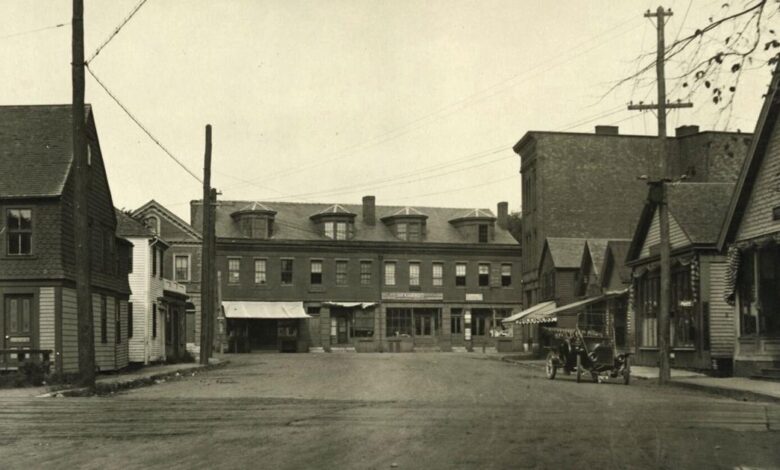The View From Swamptown: The automobile changed life throughout Southern RI | The View from Swamptown

South County, like the rest of the nation, waited impatiently, poised for the starter’s pistol, as the first decade of the 20th century came to a close and the Age of the Automobile revved its proverbial engines raring to begin.
You see, a “car in every driveway” was more than just a game changer it was a world changer and nothing would ever be the same. Every aspect of life here in South County would be impacted; no corner of the region would be unchanged by it, from the high society hustle and bustle at the Narragansett Pier to the manufacturing centers in Peacedale, Lafayette, and Westerly, from the sleepy little seaport villages like Wickford, Galilee, and Saunderstown to the bucolic farming communities in Exeter, Richmond, and Hopkinton, every nook and cranny in South County would soon be experiencing the undeniable unstoppable wave of progress that was the horseless carriage.
At the beginning of the century, the automobile was not much more than a curiosity, a status symbol for the elite of the time. Indeed, in 1904, when Rhode Island issued its first license plates, passenger plate #1 went to politically connected Dr. Rowland Robinson of Wakefield and #2 went to businessman Joshua C. Tucker owner of the Narragansett Pier Company. Tucker also was issued plate #33 and commercial license plate #X2, the second commercial plate in the state. Prominent Westerly resident E. R. Lewis was given plate #41 and the earliest commercial plate in Westerly, #X28, went to Albert B. Smith. In Wickford, the first passenger plate was issued to one of the village’s wealthiest residents, Charles Boyer Reynolds, and its first commercial plate, #X49, went to farmer J. W. Tingley.
But beginning in 1909, with the introduction of the mass produced Ford Model T; automobiles went quickly from observed curiosities to perceived necessities and South County like the rest of the nation began its staccato rapid-fire, take no prisoners, race into the future. The early victims that fell by the wayside were obvious ones; light rail passenger transportation like the Sea View Trolley Line and the Narragansett Pier Railroad were impacted and then driven off the road by the automobile’s breakneck pace of expansion. Roads and bridges that had served the needs of horses and horse-drawn carriages and wagons for centuries were inadequate before the proverbial windows were rolled up on the cars that sped along the way. Parking was soon at a premium everywhere in South County, necessitating changes in every village from Shannock to North Quidnessett. Waterborne transportation as well, quickly felt the horseless buggies breathing down their neck as passenger travel dropped precipitously and the newly invented cargo truck ate into their freight revenues. No way around it, the automobile was winning every race and capturing every prize.
The double-edged blade of progress that was the car sliced through social stratums and village and family values as well, impacting South County folks both positively and negatively, often in one-fell swoop. One the one hand, an auto opened up the world to the common man, his life, his education, his work were not tied inexorably to the village of his birth. But on the other hand, that village cohesiveness, that sense of connection, that so defined what South County was, and had been for centuries was forever altered by the automobile.
Where once, when a villager’s heart turned to romance, he or she would cast an eye around their eligible friends and neighbors; now they’d just hop in their jalopy and often find true love outside of the confines of their former comfort zone. Yes, for better or for worse, automobiles changed absolutely everything.
So, while these families parked in front of Mother Prentice’s famed Wickford House at the close of the first decade of the 20th century certainly must have enjoyed their glorious day trip, they hadn’t a clue regarding the tumultuous road that lie ahead for them and every other soul in South County as they careen headfirst into the Age of the Automobile.
For all of you who love stories like this, April 30th ought to be a red letter day on your calendar. You see that’s the day that the 31st Annual RI Statewide Historic Preservation Conference rolls into South County in general and our very own “Ye Olde Quaint & Historic” Wickford in particular, for a jam-packed day of history of every Swamp Yankee stripe. Don’t miss out friends; sign up today at www.preservation.ri.gov/conference. You know this South County Swamper will be in attendance and I sure hope you will be too.
The author is the North Kingstown town historian. The views expressed here are his own.



